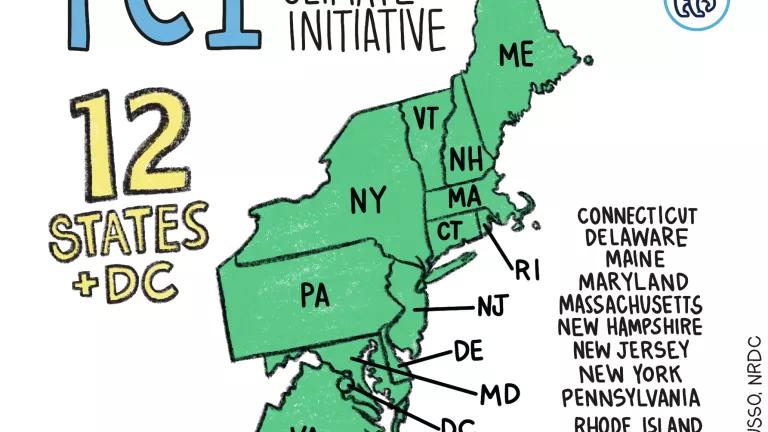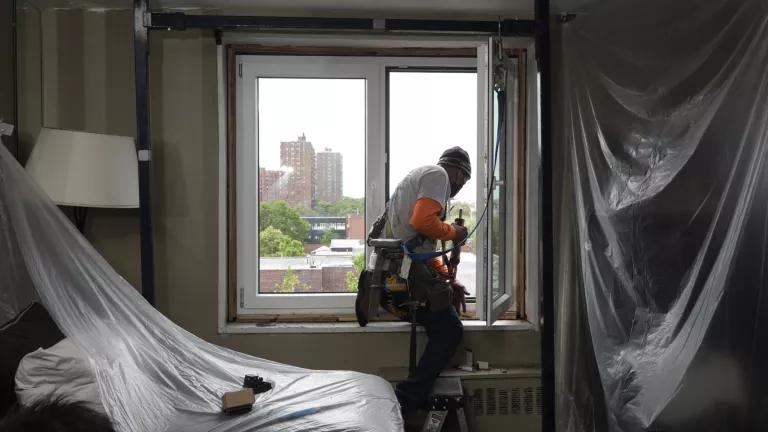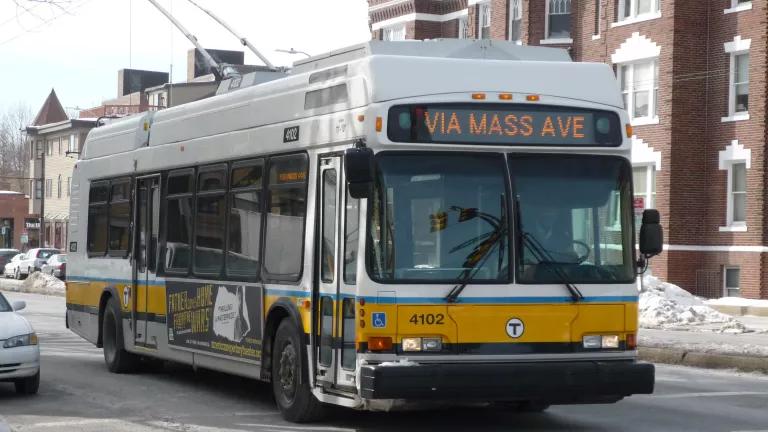Environmental Wins Abound in NY’s 2022 Legislative Session
Read our recap of the environmental wins that passed in New York State's 2022 legislative session. With the tools to prevent climate catastrophe being dismantled at the federal level, this kind of bold action at the state level is more important than ever.
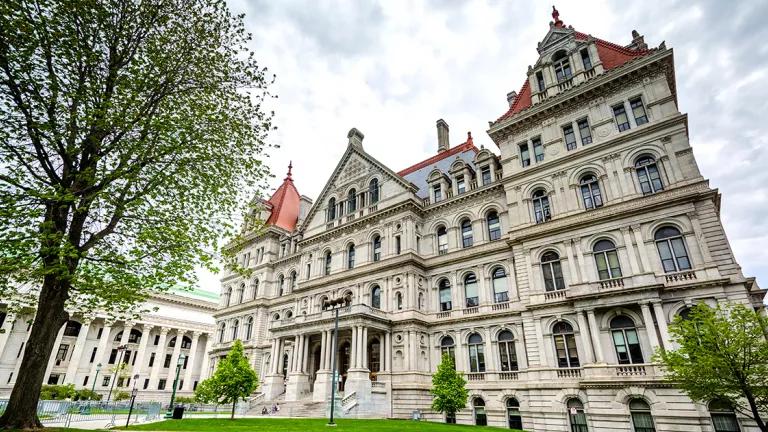
The New York State legislative session, which ran from January through June, saw big wins for the environment. For the first time in two years, NRDC and our partners, alongside hundreds of activists, flooded the halls of the state capital in Albany to champion new policies to protect the climate, the environment, and New Yorkers’ health.
Certain issues particularly resonated with lawmakers, and many of the bills that passed fall into the following themes:
- Protecting everyday New Yorkers—those who face the cumulative impacts of environmental and social stressors, inconsistent access to water utility services, and flood risks;
- Prioritizing energy efficiency in products and building construction to lessen our carbon footprint;
- Mitigating the impact of technology—from cryptocurrency to e-waste—on the environment; and
- Dedicating funding to statewide environmental and climate health projects.
With the tools to prevent climate catastrophe being dismantled at the federal level, it is now more important than ever that we take bold action at the state and local levels. New York has for years taken strong positions on climate, and the strides made this legislative session will continue this critical leadership.
Read on for our recap of the 2022 legislative session. And in a companion blog, we summarize the ways we’re already gearing up for 2023.
KEY ENVIRONMENTAL VICTORIES THIS SESSION
The following bills passed the New York State Senate and Assembly and now head to Governor Hochul’s desk to be signed into law.
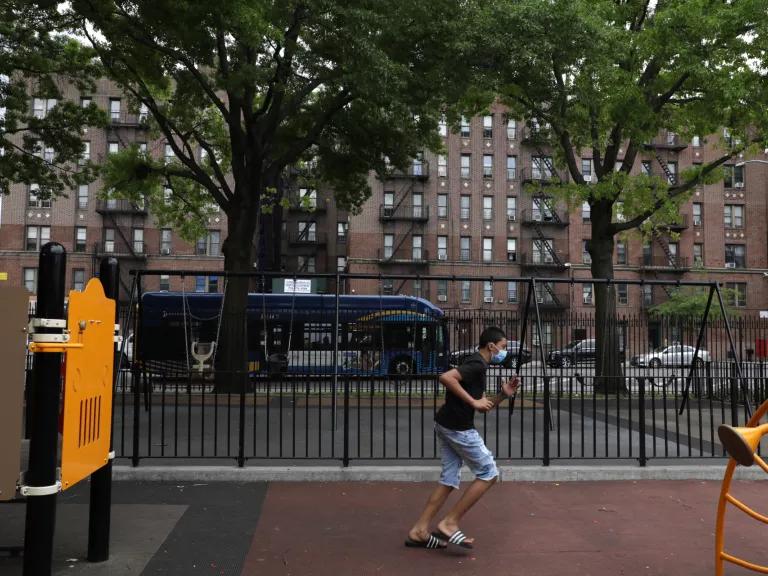
Considering the cumulative impacts of pollution in environmental justice communities
Environmental pollution is not experienced equally. Low-income communities and communities of color are burdened with a disproportionate number of facilities like factories, power plants, and garbage dumps—facing overlapping pollution from numerous facilities while at the same time being more vulnerable to the health impacts of that pollution due to other social conditions they experience. The compounding effects of social and environmental stressors on people’s health is known as cumulative impacts.
Earlier this session, New York State passed groundbreaking legislation that requires the state to consider the cumulative impacts of pollution when approving new facilities. The state will have to perform an environmental assessment for all proposed fossil fuel or energy-intensive projects that are intended to be sited in low-to-moderate income communities, and that assessment will measure the historic and cumulative environmental burdens to which that community has already been subjected. This landmark legislation means that pollution and health are considered not on a facility-by-facility basis, but holistically. Once Governor Hochul signs, likely sometime this fall, New York will join New Jersey as the second state in the nation to pass this kind of legislation.
The campaign to pass this legislation was championed by Environmental Justice groups WE ACT, South Bronx Unite, JustGreen Partnership, and others. Read more about addressing cumulative impacts in Environmental Justice communities.
Reporting water utility service and shutoffs
The COVID-19 pandemic demonstrated how important water, electricity, heat, and other essential services are to keeping New Yorkers safe and healthy. And yet, still little is known about whether utility services—in particular, water and sewer services—are currently affordable for New Yorkers.
This session, the New York State Legislature passed a bill to require all water utilities to report to the state, and simultaneously post online, data on water shutoffs, reconnections, liens, arrears, late fees, extended payment plans, and customer assistance programs. The bill requires the state utility commission to submit reports to the legislature making findings and recommendations concerning affordability of water service, hold public hearings for feedback on the commission’s initial report, and post utilities’ raw data on the commission’s website.
If signed by the governor, this would be the nation’s first legislation mandating all water utilities (including publicly owned systems) to report this wide range of data, whether on a temporary or permanent basis. This bill, which also covers electric and gas utilities, is a major step forward to enhance transparency and help facilitate future advocacy. It will provide lawmakers with a full understanding of the scale and extent of the state’s water affordability crisis, so that they can develop policies to help customers and utilities maintain affordable access to essential services. Read more about the water utility bill.
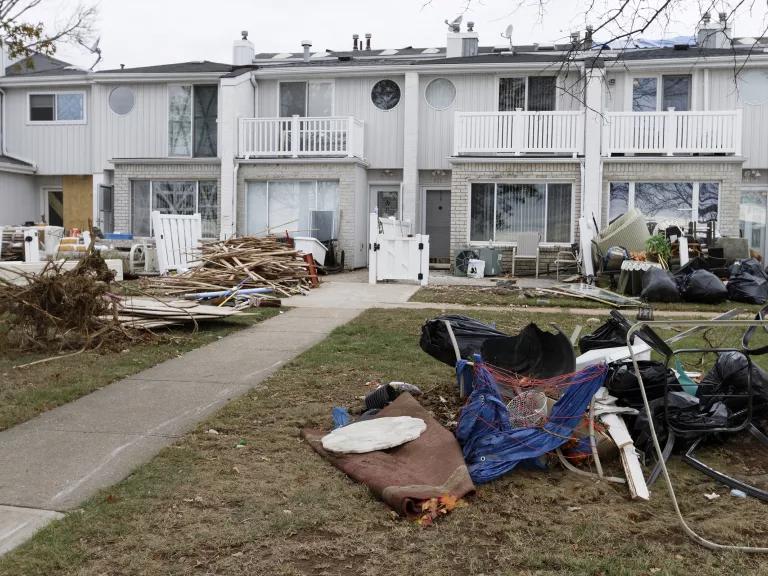
Informing renters about their homes’ flood risks
Flooding is the most common and expensive type of disaster in the U.S. Its effects can be devastating, leading to damage or loss of homes, displacement, injury and illness, and even loss of life—with communities of color and other marginalized people at the highest risk. And with the increasingly felt effects of climate change, the risk of flooding is quickly increasing.
Thanks to legislation passed this session, New York renters will soon know their homes’ flood risks. Under this bill, landlords will be required to tell potential renters a home’s flood risk, including whether the property has flooded previously. When signed into law, New York will join only a handful of states that give renters such rights. To secure this win for New York renters, NRDC worked closely with local partners Waterfront Alliance and the Rise to Resilience coalition. Read more about disclosing flood risks and this win for New York renters.
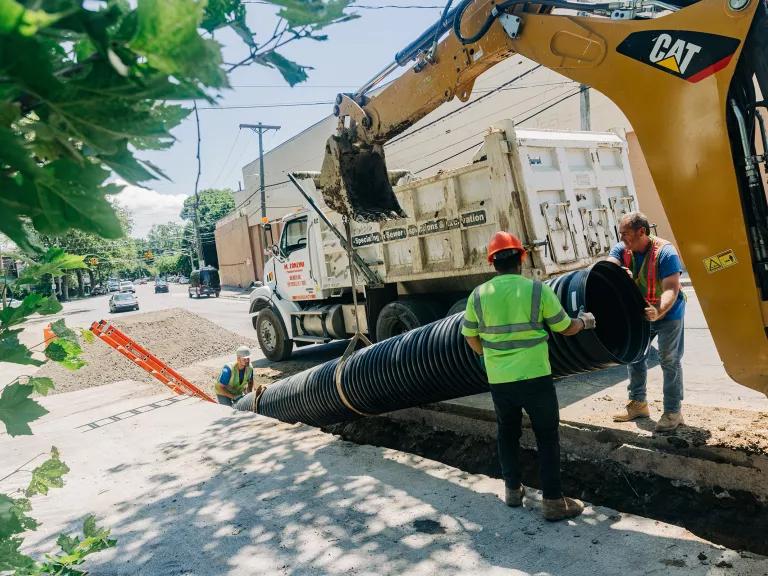
Addressing Mount Vernon’s environmental justice crisis
Residents of Mount Vernon, a small city in Westchester County, are burdened with a failing sewer infrastructure system. Nearly every day for the last two decades, raw sewage has gushed into residents’ homes, backing up into toilets, bathtubs, and sinks. At its core, this is an environmental justice issue; Mount Vernon is 65 percent Black and the second most densely populated city in the state, and has experienced a decades-long underinvestment in sewer infrastructure combined with a longstanding history of systemic racism that forces low-income communities and people of color to deal with disproportionate environmental harms.
In April, Governor Hochul announced a $150 million funding commitment for the City of Mount Vernon to restore reliable sewer service to residents, make emergency repairs, and help families with home repairs needed because of sewage backups. This historic infrastructure investment marks a huge win for Mount Vernon. Read more about how the state is addressing the environmental injustice in Mount Vernon.
Making household appliances and buildings more energy efficient
Energy efficiency is the science of achieving the same or better performance while using less energy—and setting standards for energy efficiency is a powerful policy tool with a proven success rate in reducing energy consumption. This session, we supported the Advanced Building Codes, Appliance and Equipment Efficiency Standards Act of 2022, which sets higher efficiency standards for a broad range of consumer products including TVs, computers, air purifiers, and many more products. These new standards will disallow the sale of the worst-performing versions of these products, thereby reducing energy and water consumption, curbing carbon emissions, and saving New Yorkers money on energy costs.
The bill also updates the math underlying the energy codes for buildings. By incorporating greenhouse gas emissions and the full useful life of building components into the life cycle analysis in the State Energy Code’s scope and design process, these standards will fully incorporate the benefits of energy efficiency and ultra-efficient heat pumps and account for the negative climate impacts of oil and gas heat.
The Codes and Standards bill passed both houses in the New York State Legislature and was signed into law by Governor Hochul on July 5th. Overall, it will provide a $15 billion savings for NY consumers in the next 15 years. Read more about the Advanced Building Codes, Appliance and Equipment Efficiency Standards Act of 2022.
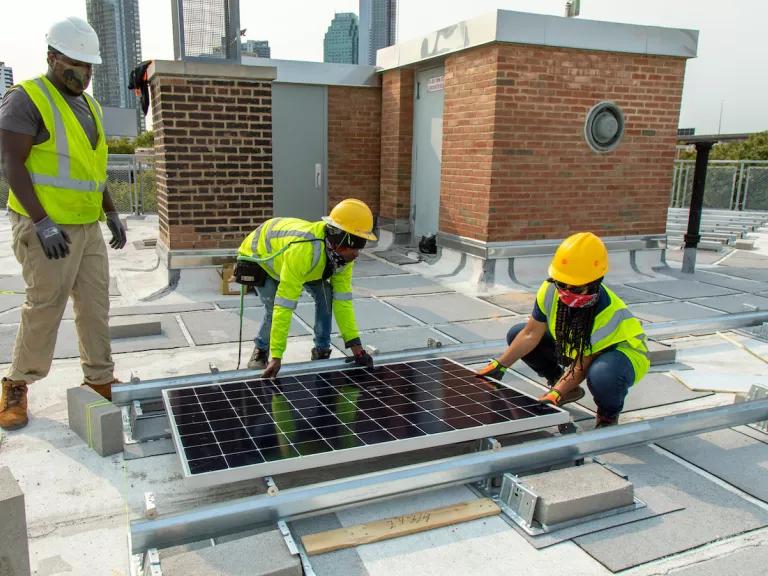
Investing in energy efficiency
This spring, three state agencies—the New York Power Authority (NYPA), New York City Housing Authority (NYCHA), and New York State Energy Research and Development Authority (NYSERDA)—launched the Clean Heat for All Challenge. The challenge prompts equipment manufacturers to develop new energy-efficient electrification products to provide clean energy to public housing residents. This marks a landmark $250 million investment towards innovative fossil-free heating sources and heat pump technologies. Read more about the #CleanHeat4All challenge.
The Governor also announced a commitment to two million climate-friendly homes in January in her State of the State address, including substantial investment in low-income homes through a dedicated green electrification fund, as part of Homes and Community Renewal’s (HCR) new $25 billion, five-year housing capital plan. Read more about the Governor’s plan to achieve 2 million climate-friendly homes by 2030.
Transitioning to non–fossil fuel heating systems
Protecting the future of our planet is dependent on stopping the burning of dirty, polluting fossil fuels and transitioning to renewable energy sources. Last month, the New York Public Service Commission took an important step, issuing two orders that will facilitate strategic planning for a statewide transition to non-fossil fuel heating systems.
The first, the “Gas Planning Order,” directs gas utilities to submit long-term plans for the next 20 years. Each plan will include a depreciation analysis with various scenarios, including having a fully depreciated all gas systems pipes and equipment by 2050; screening all capital projects for non-pipeline alternatives, especially leak prone pipe (LPP) replacements; and a quantification and analysis of existing gas system extension subsidies that fully pay for most new customer connections.
The second, called the “CLCPA Implementation Order,” makes sure that gas utility companies comply with the climate goals of New York’s landmark Climate Leadership and Community Protection Act. Gas utilities will be required to conduct a “Greenhouse Gas (GHG) Emissions Reduction Pathways Study” that analyzes the scale, timing, costs, risks, uncertainties, and customer bill impacts of achieving significant and quantifiable reductions in GHG emissions from the use of gas delivered by the Utilities. Read more about the PSC orders. Read more about how gas utility planning can transition us to a clean energy future.
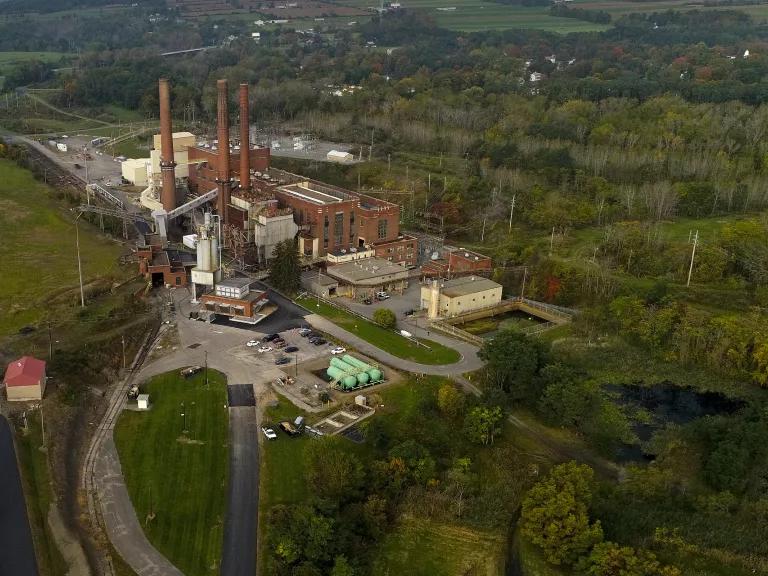
Assessing the climate cost of cryptocurrency
Cryptocurrency may be changing the financial landscape—but it also brings potentially dangerous impacts on the climate. Since cryptocurrencies exist only online, they depend on crypto mining, a relatively new technology that requires powerful computer rigs to work nonstop to solve complex equations—in the process, consuming enormous amounts of electricity. Even worse, the cryptocurrency industry has brought back online defunct oil and gas power plants to be used for these mining operations.
This session, the New York State Legislature passed a limited, two-year moratorium on crypto mining operations. The moratorium targets the dramatically energy-intensive, wasteful Proof-of-Work mining facilities that use behind-the-meter power plants not reliant on the existing electrical grid. Under this new bill, the Department of Environmental Conservation will also be required to study the environmental impacts of the crypto industry. The bill now goes to Governor Hochul for signature. Read more about the crypto’s climate problem.
Reducing electronic waste with a “Right to Repair” bill
For years, manufacturers of electronic products have had a monopoly on repair services—in other words, you’ll often have to go to the same store you bought your smart phone to get it repaired. And because repairs are often not made due to lack of parts or high costs, these products have become part of an expanding electronic waste problem, winding up in landfills or illegally disposed.
This session, New York became the first state in the nation to pass a broad “right to repair” electronic equipment bill. Under the Fair Repair Act, manufacturers of electronic products like cellphones and computers are required to make diagnostic information and repair parts available to independent repairers and consumers.
Funding for environmental and climate health
In addition to these many legislative and regulatory wins, New York State passed a budget this year that dedicates tremendous funding towards environmental projects. These include:
- A $400 million investment in the state’s Environmental Protection Fund;
- A $4.2 billion Bond Act;
- A commitment to electrify 2 million homes;
- A $500 million commitment to Clean Water Infrastructure Investments;
- A vastly expanded wetlands protections; and
- The expansion of SNAP (Supplemental Nutrition Assistance Program) benefits by $2.5 million.
As we look back on the successes of this legislative session, we know that the fight to protect our planet and our neighbors is far from over.

